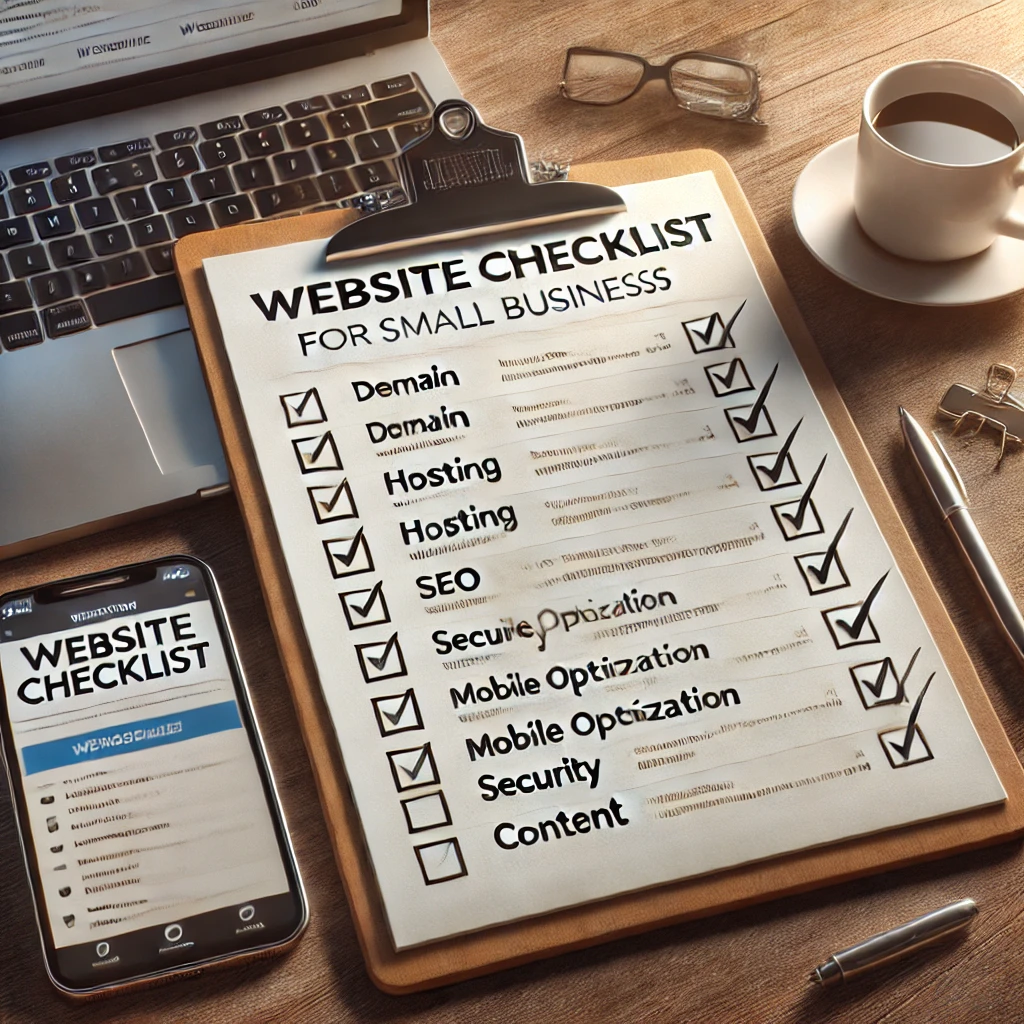The Ultimate Website Checklist Every Small Business Needs!
Why Every Small Business Needs a Website
In today’s digital-first world, having a website isn’t just an option—it’s a must-have for any small business looking to establish credibility, attract new customers, and drive growth. Whether you’re a local bakery, a freelance consultant, or a startup, your website serves as your digital storefront, making it easier for potential customers to find, trust, and buy from you—anytime, anywhere!
Why is a website crucial for your business?
-
- Builds Credibility – A professional, well-structured website makes your business look legitimate and trustworthy.
-
- Expands Reach – Attract customers beyond your physical location, whether they’re across town or across the globe.
-
- Boosts Conversions – A well-optimized website with strong Calls-to-Action (CTAs) can turn visitors into leads and paying customers.
-
- Works 24/7 – Unlike a physical store, your website never sleeps! It promotes your business round the clock.
The Essential Website Checklist for Small Businesses

Launching your business website? Don’t miss these must-have elements! This checklist will help ensure your website is professional, user-friendly, and optimized for success.
1. Domain & Hosting – The Foundation of Your Website
- Pick a professional domain name (e.g., yourbusiness.com) – Keep it short, memorable, and easy to spell.
- Invest in reliable web hosting – Fast, secure, and scalable hosting ensures smooth performance.
- Enable SSL (Secure Socket Layer) – A secure website (HTTPS) builds trust and improves SEO.
2. Website Design & User Experience – First Impressions Matter!
- Ensure a mobile-responsive design – Over 60% of website traffic comes from mobile devices.
- Create easy navigation – A simple, clear menu helps users find what they need quickly.
- Keep branding consistent – Use your logo, brand colors, and fonts consistently across pages.
- Optimize images for speed – Compress images to improve loading times without losing quality.
3. Essential Pages – Don’t Leave These Out!
- Homepage – Clearly communicate who you are, what you do, and how you help.
- About Us – Share your story, values, and mission to build a connection with visitors.
- Services/Products – Provide details on what you offer and why customers should choose you.
- Contact Page – Include a contact form, phone number, email, and location (if applicable).
- Privacy Policy & Terms of Service – These are crucial for legal compliance and customer trust.
4. SEO Optimization – Be Found on Google!
- Use keyword-rich titles and meta descriptions – Helps rank higher in search results.
- Optimize images with alt text – Improves accessibility and SEO.
- Ensure SEO-friendly URL structures – Keep URLs clean, short, and descriptive.
- Create valuable, shareable content – Blog posts, FAQs, and guides attract organic traffic.
Submit your site to Google Search Console – Helps monitor and improve visibility.
5. Conversion Optimization – Turn Visitors Into Customers!
- Include clear Calls-to-Action (CTAs) – “Book a Call,” “Get a Quote,” or “Sign Up Now” should be visible.
- Add an email sign-up form – Capture leads and grow your email list effortlessly.
- Use testimonials or reviews – Social proof boosts credibility and encourages conversions.
- Ensure fast loading speed – Websites that load in under 3 seconds see better engagement and retention.
6. Security & Performance – Keep Your Site Safe & Fast!
- Regularly update software and plugins – Helps prevent security breaches (especially for WordPress users).
- Use strong passwords & enable two-factor authentication (2FA) – Protects against hacking attempts.
- Set up website backups – In case of issues, backups allow you to restore your site quickly.
- Install a security plugin or firewall – Blocks suspicious activity and ensures site safety.
7. Legal & Compliance – Protect Your Business & Users
- Implement GDPR-compliant cookie and privacy policies – Required if you collect user data.
- Provide clear refund and return policies – Essential for eCommerce websites.
- Ensure website accessibility – Make your website easy to use for people with disabilities.
🎁 Get Your Free Website Checklist PDF!
Want a printable version of this checklist?
Download Now to get instant access and take your business website to the next level!
Need help designing your website?
Contact us today! We’d love to bring your vision to life.